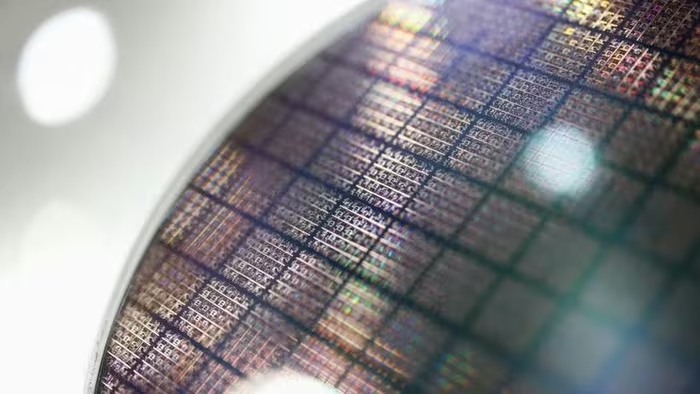Turning seawater into hydrogen to fuel ships - VietTimes
Posted on: 10/10/2025
1. Turning Seawater into Hydrogen

Breakthrough technology converts seawater into clean hydrogen fuel for maritime transport. Photo: Interesting Engineering.
A collaborative project between Genuine H2 and researchers at Brunel University London is developing groundbreaking technology to convert seawater into clean hydrogen fuel for maritime transportation.
The plan involves splitting seawater using renewable electricity to generate hydrogen gas, which will then be safely stored on ships in a solid molecular form at room temperature. When burned in an engine, hydrogen emits only water vapor, completely eliminating CO2 emissions.
This technology uses special electrodes capable of directly extracting hydrogen from seawater without expensive desalination, along with a thin nanomembrane for safe storage without massive pressure tanks. The project has just received £1.44 million in funding from the UK government to accelerate the decarbonization of the maritime sector.
2. Blood Test Diagnoses Chronic Fatigue Syndrome (ME/CFS) with 96% Accuracy
Scientists at the University of East Anglia (UEA) and Oxford BioDynamics have developed a highly accurate (96%) blood test to diagnose Myalgic Encephalomyelitis/Chronic Fatigue Syndrome (ME/CFS).
This long-term debilitating illness, which has lacked a definitive diagnostic tool, has caused years of uncertainty and misdiagnosis for millions of patients.
The new test utilizes EpiSwitch 3D Genomics technology to analyze DNA folding patterns in cells—an “invisible code” that reflects the body’s biological processes. Results show that ME/CFS patients exhibit very distinctive DNA folding signatures.
Researchers believe this breakthrough not only offers a reliable diagnostic method for ME/CFS but also paves the way for similar tests to identify long COVID and other related conditions.
3. Google Invests €5 Billion to Expand Data Center in Belgium, Creating Thousands of Jobs

Google invests €5 billion to expand its data center in Belgium. Photo: Reuters
US tech giant Google has announced plans to invest €5 billion ($5.4 billion USD) between 2026 and 2027 to expand its data center in Saint-Ghislain, Belgium. The move is driven by the growing demand for cloud services, fueled by the rapid rise of Artificial Intelligence (AI).
The expansion project is expected to create 300 full-time positions and around 15,000 indirect jobs annually. Google Belgium Director Tom De Block emphasized: “To keep Belgium competitive, companies must embrace AI. Infrastructure is crucial—but so are skills.”
To meet sustainable energy needs, Google has signed new contracts to build 110 megawatts of wind and solar capacity. Since opening its first data center, Google has invested over €11 billion in Belgium.
4. Hitachi Uses Nvidia AI to Maintain Elevators, Halving Labor Requirements

A Hitachi Building Systems technician inspects an elevator. Photo: Nikkei Asia
Japanese conglomerate Hitachi will deploy generative Artificial Intelligence (AI) developed by Nvidia to improve elevator maintenance processes, aiming to reduce the workforce required by half. This initiative addresses Japan’s shortage of skilled technicians and the rising demand for elevator maintenance.
The AI system will be customized through training on Hitachi’s technical specifications and maintenance manuals. During inspections, the AI will provide step-by-step voice guidance and issue alerts when errors are detected.
Workers will wear helmet-mounted cameras to record the entire process. The system will then automatically generate work reports from the video, converting footage into text and attaching relevant images. Hitachi expects to roll out this system in the second half of fiscal year 2026.
5. U.S. Expected to Lead Global Chip Investment by 2027 Amid AI Boom

Spending on chip equipment is a key measure of manufacturing capacity expansion and investment readiness.
According to a forecast by market research firm SEMI, the U.S. semiconductor industry is expected to surpass major chip powerhouses like China, Taiwan, and South Korea in investment starting from 2027. This growth is driven by the AI chip boom and U.S. government policies promoting domestic production of advanced semiconductors.
Chip investments in the U.S. are projected to surge from about $21 billion in 2025 to $43 billion in 2028. Total investments between 2027 and 2030 are estimated at $158 billion, backed by major commitments from giants such as TSMC ($165 billion) and Samsung ($40 billion).
This surge occurs as global spending on 300mm semiconductor manufacturing equipment is expected to reach $374 billion between 2026 and 2028, underscoring how the AI race is driving rapid worldwide production capacity expansion.